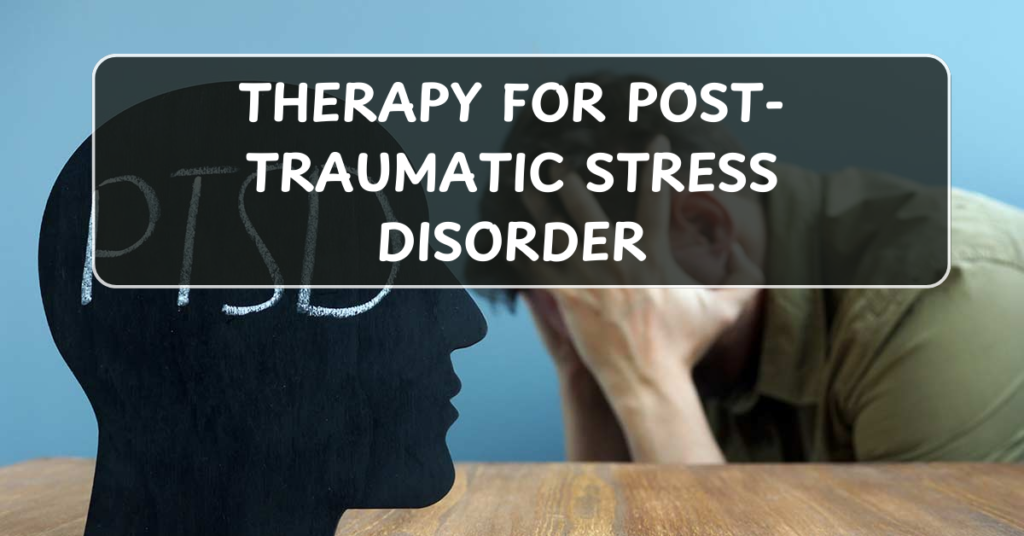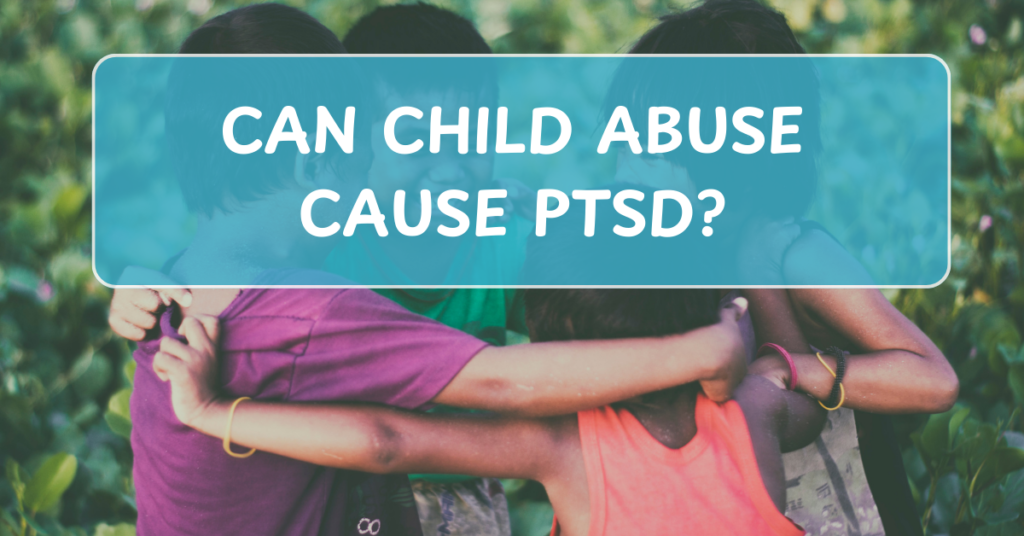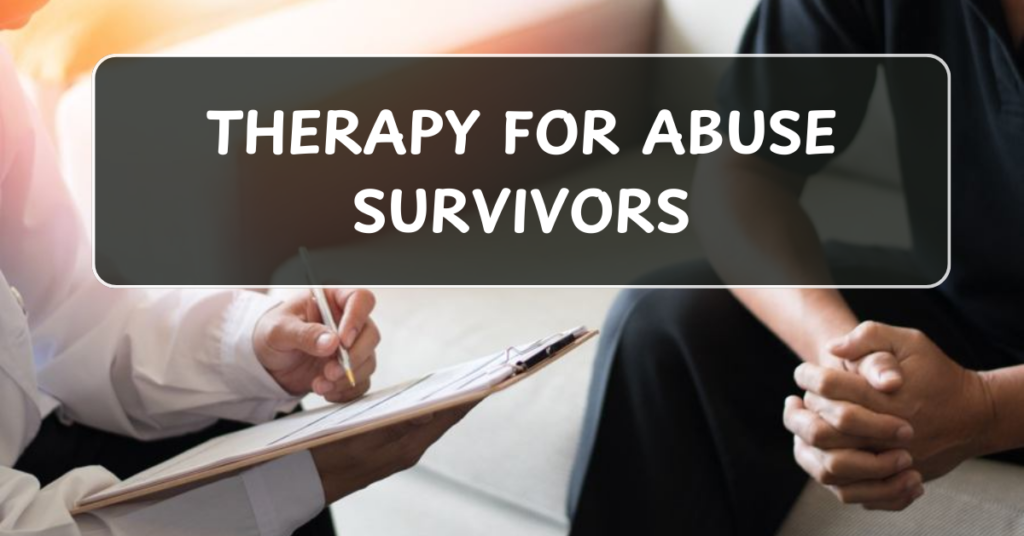
Post-Traumatic Stress Disorder (PTSD) is a serious mental health condition that can develop after an individual experiences or witnesses a traumatic event. Whether the trauma is from combat, natural disasters, physical or sexual abuse, accidents, or other distressing experiences, PTSD can have lasting effects on one’s mental and emotional well-being. Fortunately, therapy plays a crucial role in helping individuals process their trauma, reduce symptoms, and reclaim their lives. In this article, we’ll explore the most effective therapeutic approaches for PTSD and how they can help survivors on their journey to healing.
1. What is Post-Traumatic Stress Disorder (PTSD)?
- Understanding PTSD: PTSD is a mental health condition triggered by a terrifying event, either by experiencing it firsthand or witnessing it. Symptoms can range from flashbacks and nightmares to emotional numbness and hypervigilance. The emotional aftermath can interfere with daily life, relationships, and overall well-being.
- Common Symptoms: Some of the hallmark symptoms of PTSD include:
- Flashbacks or intrusive memories of the traumatic event.
- Nightmares or sleep disturbances.
- Difficulty concentrating or staying present.
- Hypervigilance (feeling “on edge” or easily startled).
- Emotional numbing or detachment from others.
- Avoidance of reminders related to the trauma.
2. Types of Therapy for PTSD
There are several types of therapy that have been proven effective in treating PTSD. These therapies provide survivors with the tools to process trauma, manage emotions, and create a sense of safety and stability.
Cognitive Behavioral Therapy (CBT)
- Cognitive Processing Therapy (CPT): A form of CBT specifically designed for PTSD, CPT helps individuals understand how their trauma has shaped their thoughts, beliefs, and emotions. It focuses on changing negative thought patterns related to the trauma and reframing those thoughts in a healthier, more realistic way.
- Example: A survivor of sexual assault may believe “I am dirty” or “I deserved what happened.” CPT helps challenge these beliefs and replace them with more empowering and accurate ones, such as “I am not to blame for what happened.”
- Prolonged Exposure Therapy (PE): This type of CBT involves gradually exposing individuals to memories or situations related to their trauma in a safe environment. The goal is to reduce the emotional charge attached to these memories and help survivors confront their fears in a controlled way.
- Example: A combat veteran may be exposed to sounds or images related to their experience to reduce their fear response.
Eye Movement Desensitization and Reprocessing (EMDR)
- How EMDR Works: EMDR is a unique form of therapy designed to help individuals process and reframe traumatic memories. It involves a series of guided eye movements that help the brain process the trauma in a way that reduces its emotional intensity.
- EMDR for PTSD: By reprocessing traumatic memories, EMDR helps individuals make sense of their experiences and reduce the psychological distress associated with them. This technique has been shown to significantly reduce PTSD symptoms.
- Example: A survivor of a car accident may revisit the memory of the crash while engaging in the eye movement process, allowing their brain to reframe the memory in a less distressing way.
Trauma-Focused Cognitive Behavioral Therapy (TF-CBT)
- Targeting Children and Adolescents: TF-CBT is particularly effective for children and adolescents who have experienced trauma. It combines elements of traditional CBT with trauma-specific interventions, such as psychoeducation, relaxation techniques, and trauma narration.
- Example: TF-CBT helps a child process a traumatic event, such as the loss of a parent or exposure to violence, by teaching them healthy ways to cope with their emotions and reframe their experiences.
Psychodynamic Therapy
- Exploring Unconscious Patterns: Psychodynamic therapy focuses on uncovering unconscious thoughts and feelings that are rooted in early childhood experiences or unresolved trauma. This therapy aims to help individuals gain insight into how their past is influencing their present behavior and emotional state.
- Example: A survivor of childhood abuse may explore how early experiences are affecting their current relationships, helping them break free from unhealthy patterns of behavior.
Group Therapy
- Healing Together: Group therapy provides a safe space for individuals to share their experiences with others who have faced similar trauma. Group therapy for PTSD often includes psychoeducation, peer support, and a sense of community. It helps individuals feel less isolated and more understood.
- Example: A PTSD support group for veterans can offer a sense of solidarity and healing, allowing members to connect with others who share their struggles and successes.
3. How Therapy Helps PTSD Survivors
Therapy for PTSD offers several benefits that can help survivors manage their symptoms and regain control over their lives:
Processing Trauma
- Therapy provides a structured environment to help survivors process and make sense of their trauma. By addressing the traumatic event and its impact, individuals can begin to heal from the emotional wounds associated with it.
Reducing Symptoms
- Effective therapy helps individuals reduce common PTSD symptoms such as flashbacks, nightmares, and hyperarousal. By using techniques like exposure therapy and cognitive restructuring, survivors can learn to manage their reactions to trauma triggers and reduce their emotional distress.
Building Coping Skills
- Therapy teaches survivors healthy coping mechanisms for dealing with stress, anxiety, and negative emotions. Skills like relaxation techniques, mindfulness, and emotional regulation can help individuals navigate the challenges of PTSD more effectively.
Improving Self-Esteem and Empowerment
- PTSD often leads to feelings of shame, guilt, or helplessness. Therapy helps individuals rebuild their self-esteem, regain a sense of control, and empower them to take charge of their healing journey.
4. The Role of Medication in PTSD Treatment
While therapy is a primary treatment for PTSD, medication may be used in conjunction with therapy to alleviate symptoms. Selective serotonin reuptake inhibitors (SSRIs) and other antidepressants are commonly prescribed to help manage anxiety, depression, and intrusive thoughts.
- Medication as a Supplement: Medications can provide relief from symptoms, but they are typically not a standalone treatment. Therapy is essential for addressing the root causes of PTSD and creating lasting healing.
5. Finding the Right Therapist for PTSD
When seeking therapy for PTSD, it’s important to find a licensed mental health professional who specializes in trauma and PTSD. Look for therapists who are experienced in trauma-focused therapies such as CBT, EMDR, or TF-CBT.
- Consider Trauma-Informed Care: Ensure that the therapist is trained in trauma-informed care, which means they are sensitive to the unique needs of trauma survivors and create a safe, supportive environment for healing.
- Therapy Platforms: For those unable to attend in-person sessions, online therapy platforms such as BetterHelp and Talkspace offer access to licensed therapists who specialize in trauma and PTSD treatment.
6. Conclusion: Hope and Healing for PTSD Survivors
Post-Traumatic Stress Disorder can be debilitating, but therapy offers a pathway to healing and recovery. Through evidence-based treatments such as Cognitive Behavioral Therapy, EMDR, and trauma-focused therapy, survivors of PTSD can process their trauma, reduce their symptoms, and reclaim their lives. If you or someone you know is struggling with PTSD, it’s essential to seek professional help. Therapy can be life-changing, providing the support and tools needed to heal, grow, and move forward. Remember, healing is possible, and you don’t have to face PTSD alone.


